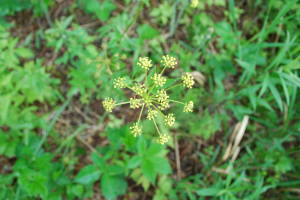Parsnips are a very old vegetable that were first grown by the Greeks and Romans probably around the first century AD, but may have been grown even before that. They were used as a sweetener for many centuries and alcohol was even distilled from them. Nowadays they are not the most popular vegetable but they remain very tasty as a mildly sweet vegetable.
Varieties of Parsnips
The varieties of parsnip available to home growers are similar to the commercially grown varieties. They can be divided in to bulbous, wedge and bayonet types.
Planting Parsnips
Parsnips seeds should be sown in warm but not overly hot weather. They dislike frost in the early stages but tolerate it fine towards maturity. The ideal temperature is around 16°C to 20°C, but it can tolerate temperatures from around 12°C to 28°C. For many climates this will be at the end of the winter, but could be in the midst of summer in very cool regions. Use a bit of common sense and ask your local growers for tips.
Prepare the soil by removing all all stones from the area and raking throughly. Ideally the soil will have had organic matter dug in the year before, but this is not necessary. The soil should be quite deep (around 2 feet), as the roots extend quite a way. Parsnips enjoy a pH of 6.5-7, so many soils will need to be limed before planting.
Sow seeds 1/4 inch to 1/2 inch deep (0.5-1cm) and 1-2 inches (2.5-5cm) apart in rows one foot (30cm) apart. Just like carrots, they need to be sown quite sparsely or else you will be forced to thin a lot. Cover them with a seed raising mix or fine compost to maintain moisture. Ensure the surface of the soil is of a rough texture to allow the seedlings to break through the surface easily.

The parsnip plant. Photo by Joshua Mayer
Growing Parsnips
Weed regularly by hand around the plants. Water regularly and mulch to maintain the moisture of the soil. Parsnips like soil that is moist but not waterlogged. A complete fertilizer in the early stages can help speed things up, but if the plot has been well prepared it is not necessary.
If frosty weather sets in, parsnips can be protected with a layer of straw.
Growing parsnips in containers is possible for some varieties. Container growing is inappropriate for many varieties due to their large and deep roots. Some clever people have grown them in barrels, but whether or not this is economically feasible is up to you, as barrels can be quite expensive and take up a lot of room. Sow a few seeds in the middle of whatever container you choose to use and thin to the strongest seedling. Remember that plants grown in containers need more regular watering than those outside.
Harvesting Parsnips
Parsnips are ready to harvest after 4-6 months. Lift the plants from the ground using a gardening fork. It’s okay to leave parsnips in the ground until they are ready to be eaten. They taste better when they spend a few weeks exposed to frost, as this creates a higher sugar content. If the temperature will head below freezing for a long period, they can be uprooted and stored in a container full of slightly moistened sand. In all but the most extreme of winters, though, a layer of straw will be enough to protect them from the elements. Many people leave them in the ground through winter and continue harvesting till the end of spring.
If needed, parsnips can be washed, cubed and blanched for 5 minutes before freezing in seal-able bags.
Threats to Parsnips
Canker is the most common thing to attack parsnips. It appears as a deep red fungus. It thrives in waterlogged soil, so be very wary of not over-watering. There is no means of controlling it if it appears, so the affected crop will have to be destroyed.
